
Dall-E is a relatively new AI model, announced by OpenAI in January 2021. The development of Dall-E was a continuation of OpenAI’s work in creating language models that could generate coherent and meaningful text, such as the GPT-2 and GPT-3 models.
Since its release, Dall-E has created significant interest and excitement in the AI and creative communities. Its ability to generate unique and unexpected content from text to image has potential applications in various fields. That is the reason why we decided to do a deep dive into Dall-E and see what this model has to offer us.
Table Of Contents
Quick Summary
OpenAI has been at the forefront of driving the AI revolution, leading the AI industry with Dall-E and Chat GPT.
Dall-E is a transformer model that can turn a text prompt into an image that accurately matches the description. Dall-E uses 12 billion parameters to achieve that level of accuracy.
Regular people, creatives, engineers, and visual professionals are finding ways to use Dall-E for assistance, inspiration, and fun.
Dall-E 2, the successor of Dall-E, generated images that are more accurate and realistic than Dall-E, with a 4x higher image resolution.
What Is Dall-E?
Dall-E is an artificial intelligence language model developed by OpenAI in 2021 that generates images from textual descriptions.
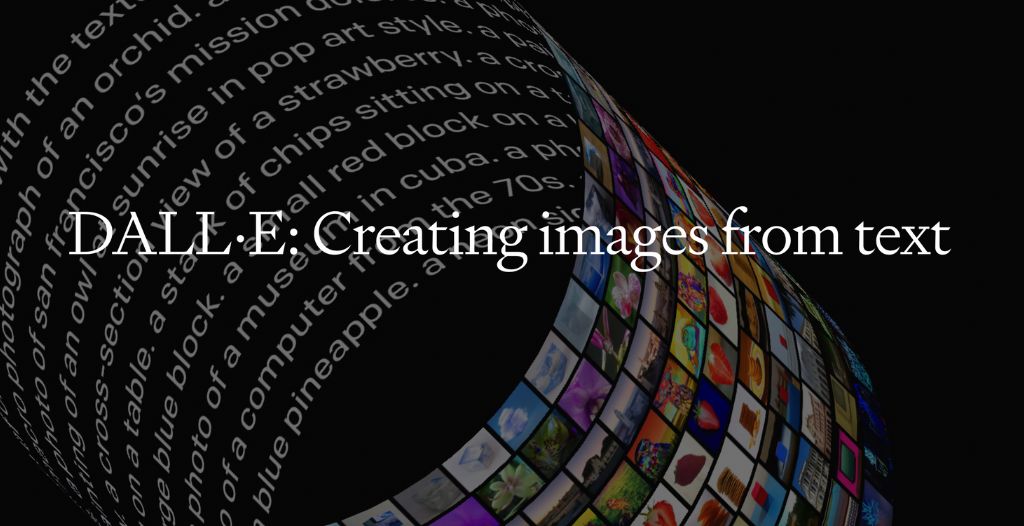
It uses a 12-billion parameter training version of the GPT-3 transformer model to interpret the natural language inputs and generate corresponding images.
The name “Dall-E” combines the artist Salvador Dali and the character WALL-E from the Pixar movie, reflecting the model’s ability to generate surreal and imaginative images from text.
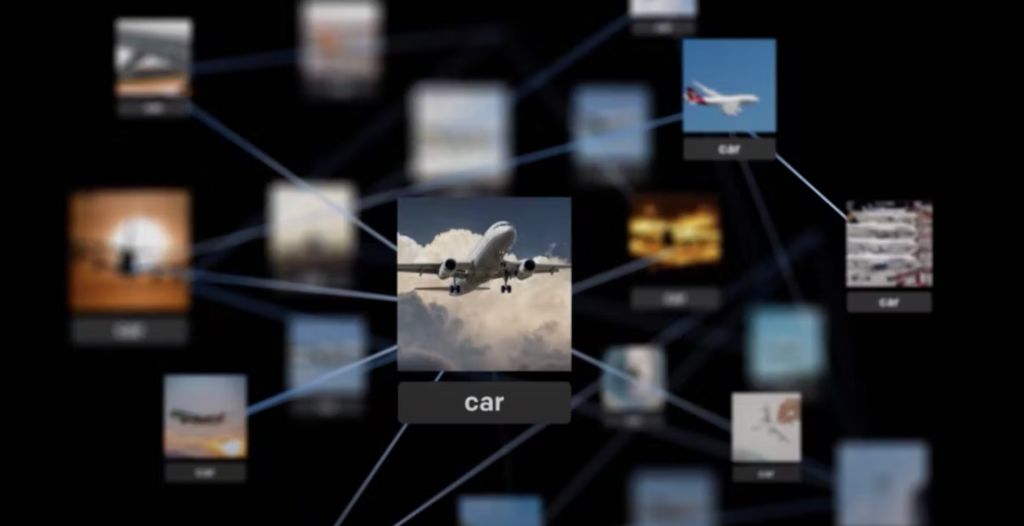
The model has been trained on a large dataset of text-image pairs, generating many surprising and creative images.
Dall-E has gained attention for its ability to generate realistic and detailed images from abstract descriptions, such as “an armchair shaped like an avocado” or “a snail made of harp strings.”
This has potential applications in various fields, including design, advertising, and entertainment
Dall-E can generate accurate images from text with a 90% zero-shot realism and accuracy score based on the Microsoft Common Object in Context (MS-COCO) dataset [1].
The more text you add to the prompt, the more you can manipulate the image generated.
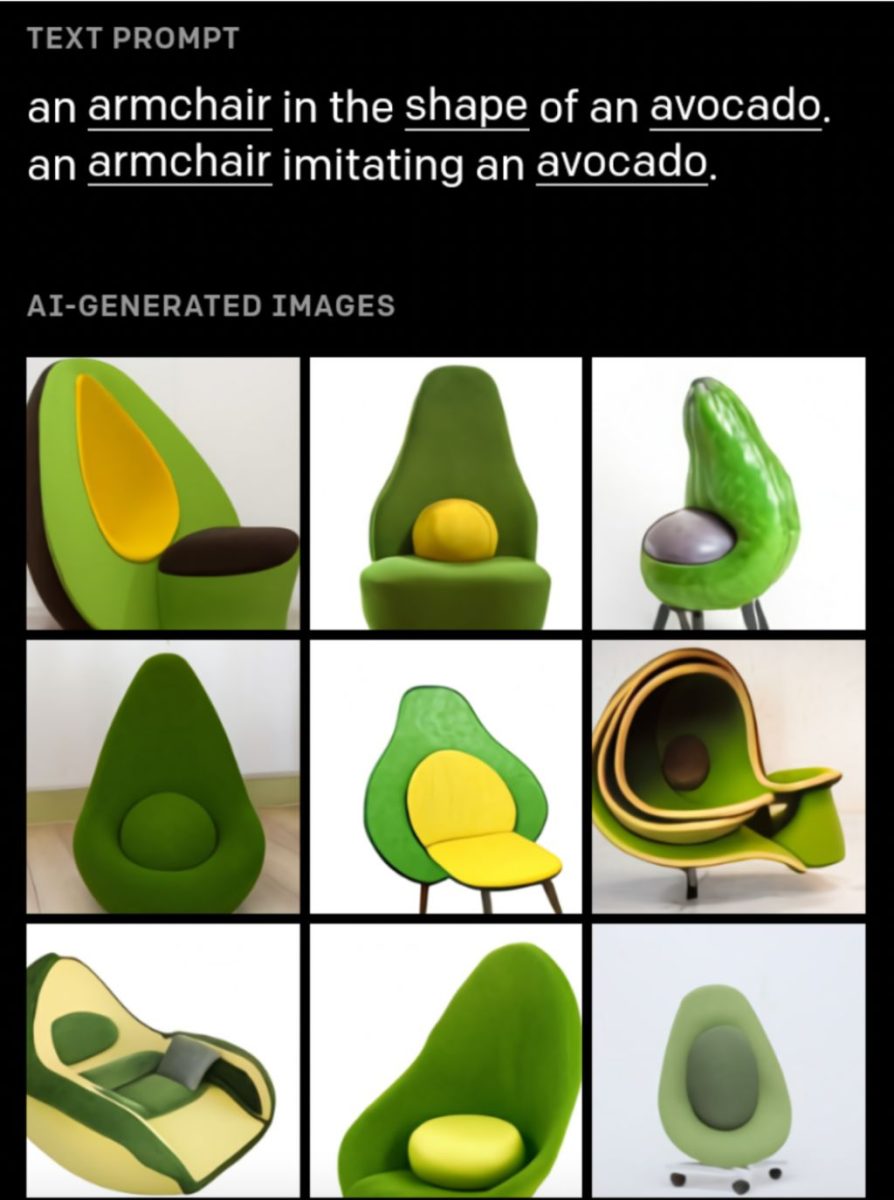
A realistic unrelated-concept image of an armchair and avocado generated by Dall-E using manipulative prompts
You can keep tweaking it forever to generate different kinds of images.
How Does Dall-E Work?
Dall-E uses a 12-billion parameter training version of the Generative Pre-trained Transformer 3 (GPT-3) transformer model to interpret the natural language inputs and generate corresponding images.

The basic working principle of Dall-E is as follows:
Input Description: The user provides a textual description to Dall-E, describing other objects they want to generate.
Encoding: The input description is encoded using a transformer-based model that maps the text input to a vector representation.
Generation: The encoded vector representation is then used to generate an image that matches the input description. The generation process involves a series of steps. The AI model generates different parts of the image and then combines them to create a final image.
Fine-tuning: To improve the quality of the created images, Dall-E is trained on a large dataset of images and their corresponding textual descriptions. This training procedure allows the model to learn how to generate more realistic and appropriate details.
For this technology to work, a neural network training system called Generative Adversarial Network (GAN) was utilized [2].
What Is Generative Adversarial Network (GAN)?
Generative Adversarial Network (GAN) is a deep machine learning model designed to generate new data similar to the input dataset. The basic idea behind GAN is to train two neural networks, one is the generator, and the other is the discriminator.

The generator network takes a random input and produces a sample similar to the input dataset. The discriminator network takes the input data and distinguishes between real and fake data. During training, the generator tries to produce images that can fool the discriminator while the discriminator tries to identify the fake data generated by the generator correctly.
The two networks are trained in parallel, with the generator trying to improve its ability to generate real data and the discriminator trying to enhance its ability to detect fake data.
GANs have many applications, including image and video generation, style transfer, data augmentation, and anomaly detection. They have been used to generate realistic images of faces, landscapes, and objects and create entirely new artworks.
They are also used in medical imaging to generate synthetic images that can augment real images and improve the accuracy of diagnoses.
There are numerous opportunities and possibilities for using AI-generated art, such as DALL-E, in content creation. One idea is to use AI-generated images for concepts not yet created or too costly to photograph.
– Brittney Grimes, writer, blogger, and editor
What Can You Do With Dall-E
When DALL-E was first released to the public, one million people were added to the waitlist, which included professionals from all walks of life, like artists, designers, engineers, authors, and architects.

All these people reportedly found DALL-E – not just fun to use but – a great career assistant in inspiration, productivity, and outright automation.
Authors could create book cover designs, illustrators could generate abstract, high-quality illustrations, and architects could generate modern building designs. Graphics Designers used DALL-E to generate business logo ideas, UI designs, and more.
According to open AI, DALL-E has the capability of:
Controlling attributes
Drawing multiple objects
Visualizing perspective and three-dimensionality
Combine concepts
Drawing animal illustrations
You can use DALL-E for creative Ai art and design, e-commerce product design and branding, and architecture and urban planning.
1. Dall-E For Creative Art And Design
DALL-E can generate all forms of illustrations, original images, and artwork in a photorealistic way using descriptive text.
The use of DALL-E in creative AI art and designs includes cartoons, book cover designs, renaissance-age-like ark works, pencil drawings, logos, mockups, etc [3].

DALL-E 2 Used to create a book cover design.
Even bloggers now use DALL-E to create images for their blog posts instead of downloading general stock photos.
2. Dall-E For E-Commerce Product Design And Branding
E-commerce store owners are not left behind in this trend. Product owners can now use DALL-E to create photorealistic versions of their products.
An e-commerce shop selling furniture could use a text prompt like ” blue velvet sofa chair with wooden legs” to accurately depict their sofa chair collection.
Fashion designers now use DALL-E to recreate eye-popping pixel versions of their latest styles and even generate varieties of mannequins to enhance the appeal.

Fashion styles with mannequins generated by DALL-E
In the future, customers could describe a product they want on DALL-E, get the most accurate image, and scan online for a store that sells that product. It’s going to be mind-blowing.
3. Dall-E For Architecture And Urban Planning
Engineers and architects experiment with DALL-E to create modern architectural designs and unconventional building concepts.
Depending on the skill of the prompter, DALL-E can be used to generate a visual representation of a building plan or even generate building designs engineers might have never thought of.
With DALL-E, we could go back in time and see what the architecture of the olden days looked like, and we could also generate futuristic building design ideas for schools, bridges, sidewalks, and stadiums that do not yet exist.

DALL-E has also experimented with actively creating futuristic designs of tech products, from phones to computers, microwaves, cars, etc.
Dall-E is at the forefront of artificial intelligence art creation, which anyone can use.
– Eric Griffith, Editor at pcmag.com
The Ethical And Unethical Use Of DALL-E
Ever heard the adage: “pictures don’t lie”? Well, in the era of photoshop image manipulation, those saying is dead.
Then DALL-E came and took it to another level entirely. Now anyone with a device and internet connection can sit in front of a screen, direct an AI with streams of prompts, and generate a realistic scene that never happened.
AI is exploited for unethical use if the created image is used to spread false information. Weirdos have used DALL-E to generate demeaning images such as Baby Trump, Jesus laughing at a meme, and chaotic moon landing scenes [4].

There’ve been concerns that image-generation AIs will be used to propagate deep fakes and misinformation [5].
To Combat that OpenAi has designed DALL-E to reject text prompts with offensive content, adult images, and uploaded images with public figures or human faces.
Here are some ethical concerns and unethical ways people can use DALL-E.
Ethical Use Of Dall-E
- Creating images or visual concepts that are used – positively – for educational, entertaining, expressive, and informative purposes.
- Generating images for inspiring creativity and breaking mental blocks in artists, designers, etc.
- Doctors can use DALL-E’s output to create images for medical imagery of internal organs or visual representations of a patient’s complaints, thereby improving diagnosis and treatment [6].
- Generation image illustration to promote diversity, equality, and inclusion.
Unethical Use Of Dall-E
- Can be used to generate images related to hate speech, racism, violence, etc.
- Generating deep fakes of individuals – especially celebrities – to spread misinformation.
- AI-generated art that violates intellectual property rights.
- Generating images for military surveillance purposes.
The Limitations Of Dall-E
Despite all the mind-blowing capabilities of DALL-E, it had limitations regarding resolutions.
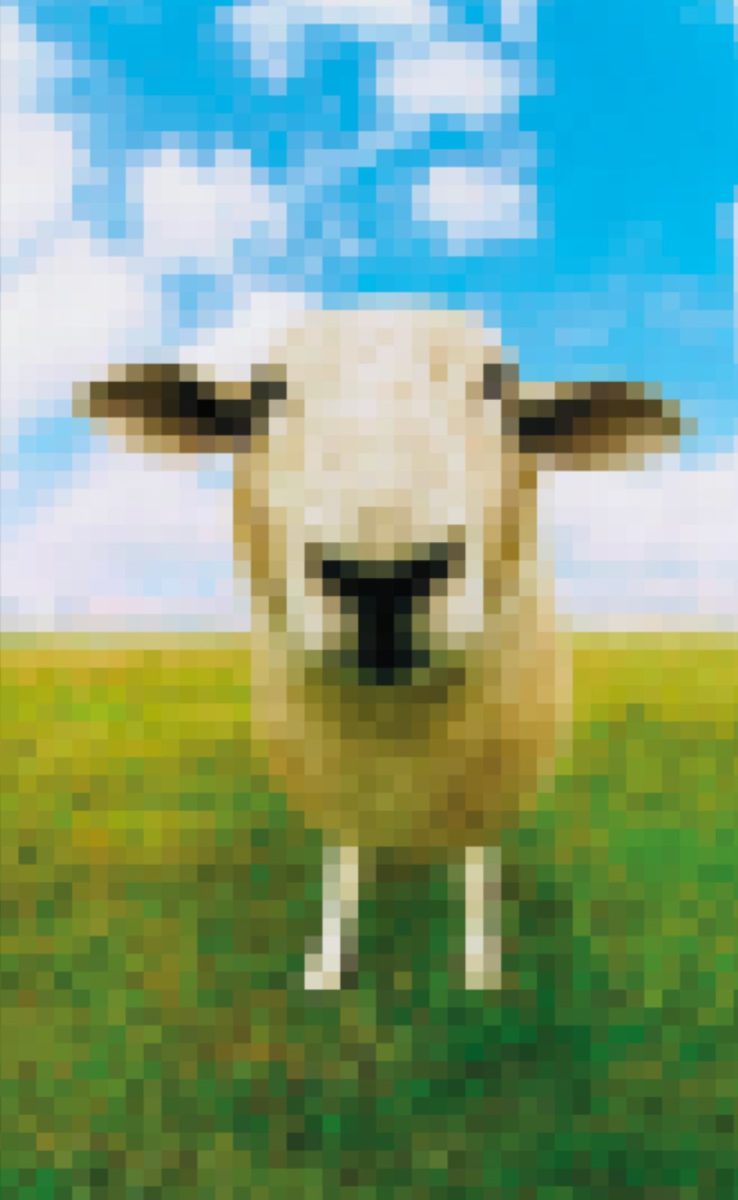
The most significant limitation of DALL-E is the low-resolution image it creates for photorealistic generations.
Most of the images generated were 512 x 512 pixels. To combat that, Open AI released DALL-E 2, another transformer model similar to DALL-E, but uses lesser parameters and generates higher-resolution images [9].
While DALL-E uses 12 billion parameters, DALL-E uses 3.5 billion parameters, with an extra 1.5 billion parameters for enhancing resolutions.
DALL-E 2, currently the most used version of DALL-E, generates images with a resolution 4x higher than DALL-E.
Future Of DALL-E
The future of DALL-E is more or less the future of artificial intelligence. And the hottest topic right now is Image Copyright.
In the future:
Anyone will be able to create artwork if they have access to DALL-E and the right words to type.
Stock Photos websites will start selling more AI-generated images. This includes sites like Adobe Stock, iStock, Shutterstock, etc [10].
AI will simplify the complex task of explaining your ideas to artists. In the future, clients can present their ideas to graphic designers using DALL-E to generate prototypes.
More companies are creating AI Image generation tools, and the quest for AI dominance will become hotter daily.
But the bone of contention is copyright.
The famous artist’s work used to train these AI models is complaining that AI is ripping off their works without giving them credit.
One good example is Greg Rutkowski, whose name has generated over 90,000 images [11].
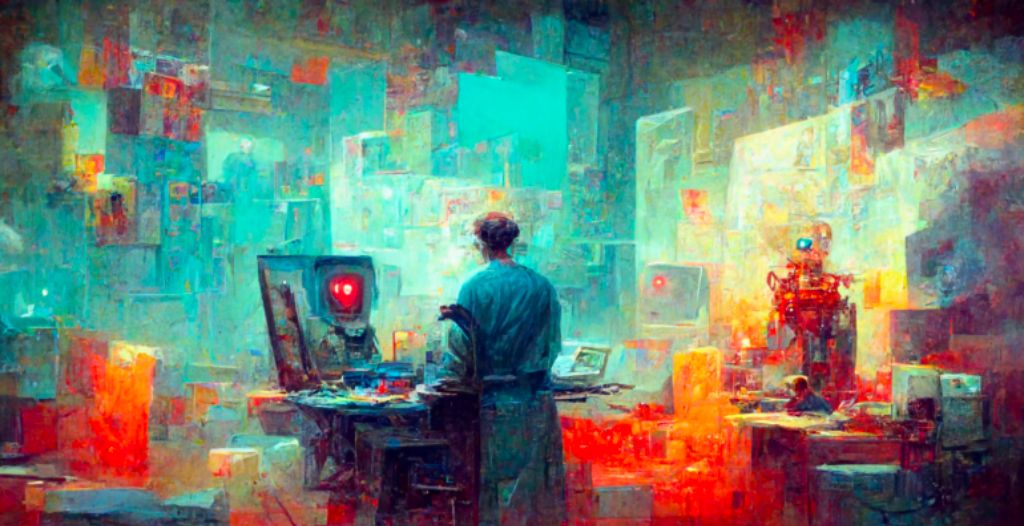
Obtaining copyrights for a generated image by AI is not legal in various parts of the world. Only human-generated Artworks can be legally copyrighted.
However, DALL-E has given its AI users the right to commercialize their AI-Generated artwork.
So the question begs, will people generating images using AI be called Artists in the future?
If they can’t legally copyright their work, are they indeed artists?
The future of DALL-E and other similar tools will be figuring out copyright issues, giving artists their due credits, and drawing a line between AI-generated work and human-owned art.
FAQs
Is Dall-E An App?
No, Dalle is not an app and it is only available on the OpenAi website. But you can join the Microsoft Designer App waitlist, which uses DALL-E to create your images and artwork.
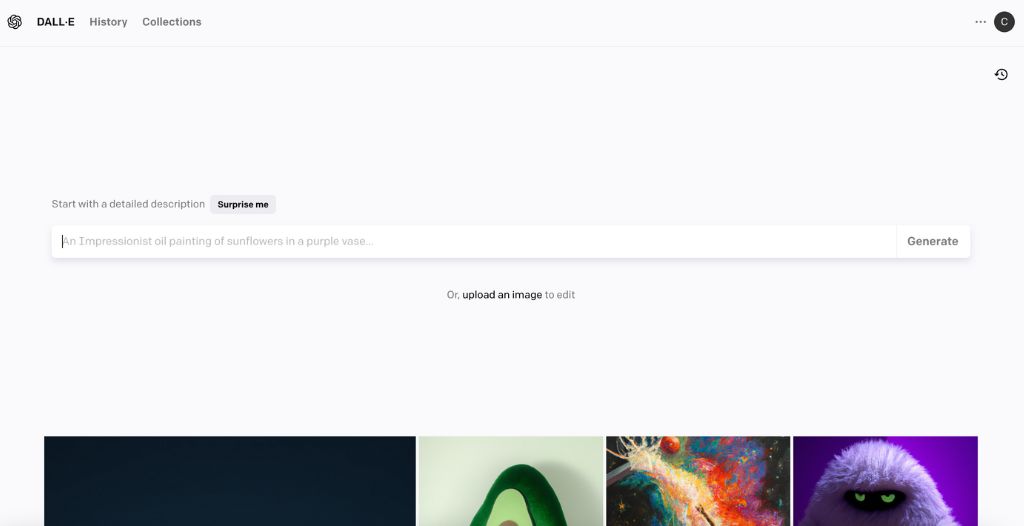
How Do I Get Access To Dall-E?
To access DALL-E, visit openai.com, click DALL-E on the menu, and sign up. The waitlist has been removed, and DALL-E is now available to everybody.
How Do I Generate Images In Dall-E?
To generate images in DALL-E, type the text descriptions of the image you want as text captions, then DALL-E will generate the original image.
You can also keep tweaking the results by adding or removing some words.
How Much Does A Dall-E Credit Cost?
Each DALL-E credit costs $0.13. But you must buy up to 115 credits at once which costs $15. DALL-E also gives 50 free credits on sign-up and 15 free credits every month after that.

Is Dall-E Open To The Public?
Yes, DALL-E is now open to everyone, as they removed their waitlist On 28 September 2021. Now everyone can access DALL-E on the OpenAI website.
Conclusion
DALL-E can potentially revolutionize various industries that rely on visual media, such as advertising, design, and e-commerce.
With DALL-E, it is possible to quickly generate high-quality images for various purposes, such as product listings, social media posts, and marketing campaigns, without expensive photo shoots or extensive graphic design work.
Lastly, Dall-E has democratized visual content creation by enabling anyone with access to the internet to generate their images without needing specialized skills or software.
